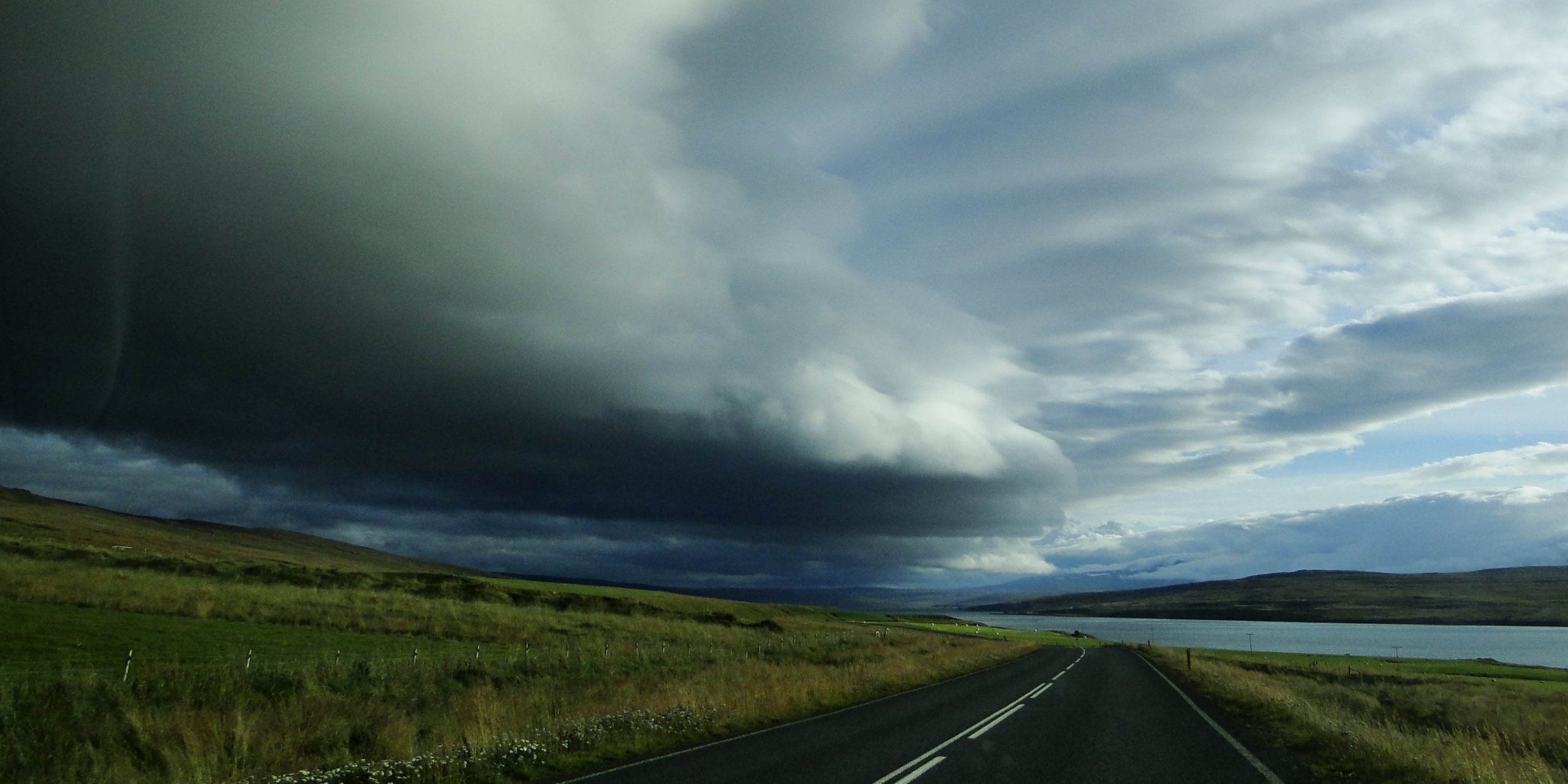
This article is part of the ISC’s Transform21 series, which features resources from our network of scientists and change-makers to help inform the urgent transformations needed to achieve climate and biodiversity goals.
Regular readers of the blogs on these pages will probably be very familiar with long-term projections for climate change, of the kind used by the Intergovernmental Panel on Climate Change (IPCC) to explore possible scenarios for global warming, with headline-grabbing temperature predictions several generations into the future.
And I’d wager that every reader has either seen or heard a weather bulletin that makes forecasts for the next few days.
But what about the nearer-term – the period in between a typical five-day weather forecast or prediction for the months ahead and climate projections for the end of the century? From farmers deciding what crop variety to plant to give them the best possible yield in the coming years, to policy-makers assessing whether the public health system is equipped to deal with a heatwave in the next three years, to insurers estimating their underwriting costs for the next hurricane season, many of the decisions that policy-makers and businesses routinely face depend on near-term climate information.
Being able to provide information on a multi-annual to decadal timescale is ‘absolutely crucial’ for climate services, says Adam Scaife, Head of Long-range prediction at the UK Met Office and Co-chair of the Scientific Steering Group for the World Climate Research Programme (WCRP) Grand Challenge on Near-Term Climate Prediction.
Filling the gap between the weather forecast for the next week and long-term climate projections to 2100 demands a model that can bring together techniques from weather forecasting and long term climate projection: they all use the same underlying computer models, but short-term predictions rely heavily on the starting conditions from latest observational data while long-term projections of climate trends rely most on the changes in greenhouse gas emissions.
Making near-term predictions depends on unrestricted exchange of meteorological data on a massive scale and in real time. Information on the five elements that make up the climate system – the atmosphere, ocean, biosphere, cryosphere and geosphere are all used to create the starting conditions for the models.
In order to do this, ‘We’ve built systems which extend the forecasting capability that was already there for those two timescales’, says Adam.
‘We get our best estimate of what the atmosphere, ocean and other components such as the sea ice and moisture in the land surface looks like today. All of that is used to create the starting conditions for the prediction. We then take a numerical model, which is based on five fundamental equations of fluid mechanics and thermodynamics, and use the starting conditions for the whole globe to kick off the model forecast. It’s the same machinery that is used for predicting weather and long-term climate change’.
Models can also be adjusted to take in different scenarios – for example differing levels of carbon dioxide (CO2) emissions, or specific events such as a volcanic eruption that would release dust and ash particles into the atmosphere and affect the climate. The computer model can then provide a solution for the future climate that is derived from the basic laws of physics.
However, given that the weather is chaotic, even a small difference in one variable can sometimes have a drastic effect on the outcome. It’s for this reason that the model is used to make multiple forecasts.
‘If you make one forecast, chaos theory tells you that it’s going to wobble around. The specifics of that particular evolution are not necessarily going to happen at all. So you have to make a bunch of forecasts, which we call an ensemble. We typically run tens of forecasts for the coming five years. So you have a whole bunch of forecasts evolving forwards in time, and some of them will go up and some of them will be more flat. But if there’s a predictable signal, the pack of forecasts shows a common feature, such as all trending for a time in the same direction,’ says Adam.
For example, the models can predict El Niño in the coming years. If eight of ten forecasts show a large enough increase in Pacific sea surface temperature we say there is an 80% chance of an El Niño event in the coming period. For predictions out to a few years ahead, Adam explains, the particular starting conditions in the ocean, and to a smaller degree in the atmosphere, plus the level of greenhouse gas emissions, have an influence on atmospheric weather patterns.
There’s been an increase in research on near-term climate predictions in recent years, and they are becoming more skilful as computing power increases, observations of the climate are refined and improved, models are run at higher spatial resolution, and the number of forecasts in the ensembles are increased.
There are now around ten research groups working on near-term climate predictions around the world, and the World Meteorological Organization (WMO) has designated five ‘Global Producing Centres’ for Annual-to-Decadal Climate Prediction. The Met Office Hadley Centre has been designated as the Lead Centre to collect and collate predictions. This followed the decision to make near-term climate prediction a ‘grand challenge’ for the World Climate Research Programme (WCRP). Together with Terence O’Kane from Australia, Adam co-chairs the Scientific Steering Group for the ‘grand challenge’ project, which had three main objectives:
(1) To improve the quality of initialized decadal climate information and prediction;
(2) To collect, collate, and synthesize prediction output and tailor information toward services that address stakeholder needs; and
(3) To develop processes to assess and communicate the degree of confidence and uncertainty in the predictions.
As part of the research, the project worked to operationalize predictions of the near-term climate and to develop a regular ‘Annual to Decadal Climate Update’ that gives a summary of predictions for the next few years. When the 2021 report was published earlier this year, along with the various regional aspects of the predictions, the headline was that annual mean global – land and sea – mean near-surface temperature is likely to be at least 1˚C warmer than pre-industrial levels, and that it is about as likely as not that one of the next five years will be at least 1.5˚C warmer than pre-industrial levels.
However, cautions Adam, this doesn’t mean that the Paris threshold of 1.5˚C warming will have been reached. What the models show, says Adam, is that the global temperature is ‘fluctuating ever closer to the 1.5˚C level’:
‘It’s likely that as we get close to the Paris threshold, temporary exceedance of the 1.5˚C levels will happen more often. We can already see those events in the forecasts. We’re so close now that temporary events are becoming more likely: there’s a 40% chance of a temporary exceedance event in the next five years but that still wouldn’t mean we’ve broken the Paris threshold. Fluctuations in climate over years, or even a decade, are large and they can come from natural sources, or from other factors. They can buck the trend of climate change, or they can exacerbate it. If you want to know which of those things is more likely to happen in your particular region of interest, then you need to pay attention to the near-term climate predictions.’
We’re used to hearing that effective action on climate change demands long-term thinking and immediate emissions reductions. Added to that, advances in near-term climate prediction are building the evidence base needed to inform adaptation and planning at the regional level on timescales that are crucial to governments and business decision makers.

Adam Scaife
Adam is head of Monthly to Decadal Prediction at the UK Met Office, which includes the research, production and issuing of Met Office climate predictions from months to a few years ahead. Adam’s personal research is focused on climate variability and computer modelling of the climate. He has published around 200 peer reviewed articles on climate variability, simulation and prediction using physically based computer models and is recognized internationally as a highly cited researcher.
Read Adam Scaife’s full biography on the UK Met Office website.
Header photo: Annika Vogel (distributed via imaggeo.egu.eu).